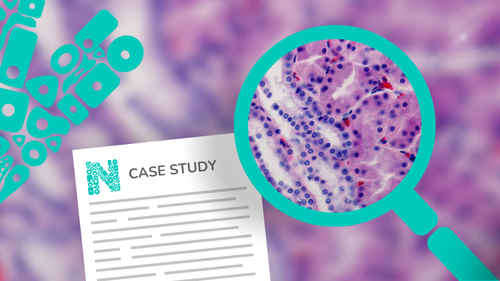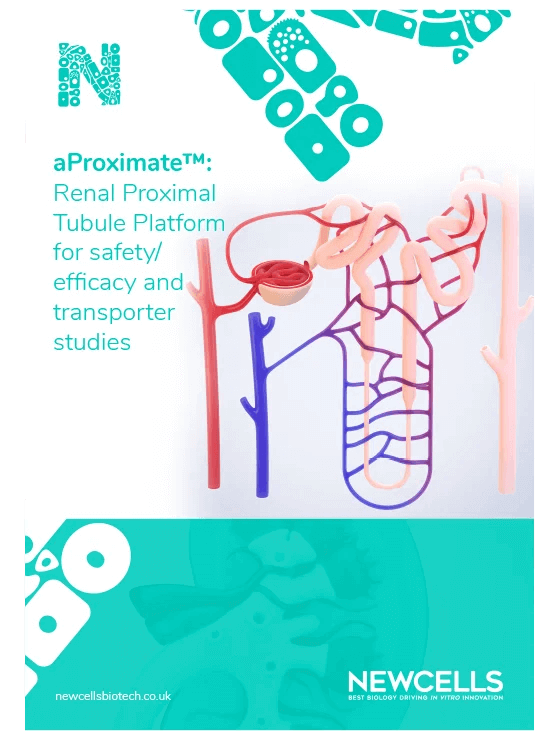Assessing the validity of a nephron model for a metabolic disease study
Tissue
Models of the Kidney NephronModels and Services
Drug Transporter Interactions & DDI studyThe Problem of the Client
The client, working on the genetic metabolic disease Phenylketonuria, required a proximal tubule in vitro model to validate the transport mechanism of a specific amino acid and to then test the effect of new drugs in the kidney.

Solution
We used our primary aProximate™ human and mouse proximal tubule cell models to identify the transporter of interest, measure the amino acid transport and then to test efficacy of the client’s compounds.
Step 1:
Understanding the Problem
Our study manager and team worked with the client to define the exact questions that needed to be answered, timeline and project expectations. The study needed to:
- Identify presence of the renal transporter responsible for the renal uptake of a specific amino acid
- Understand the mechanism of action of the amino acid
- Test the effect of various novel compounds on the transport of the amino acid
- Assess the correlation between mouse and human studies.
Step 2:
Developing a Customised Experimental Plan to Compare the Human and Mouse Models
We designed a study in 3 parts:
- Generation of the primary mouse and human proximal tubule cell (PTC) model for the study.
- Evaluation of amino acid transport uptake and intracellular accumulation in the human and mouse PTC models using radiolabelled amino acid and transporter specific inhibitors.
- Evaluation of the ability of a new compound to selectively inhibit transporter-mediated amino acid uptake in mouse and human kidney proximal tubule cells.
Step 3:
Project Execution within 5 Months
Our team of scientists completed the experiments within 5 months providing regular updates to the client.
The complete study included the experimental phase, data processing, data analysis and development of a comprehensive report.
Experimental Conditions:
- 2 PTC models were generated (human and mouse) and were used to test
- 8 concentrations of amino acid test agent
- 4 inhibitor compounds
- 2 internal controls
- Each model was generated in triplicate (from 3 kidney donors) and each data point was performed in triplicate
Step 4:
Delivery of Results
The dataset which was shared digitally with the client and discussed over a call with our study manager and internal experts showed:
- Expression of the renal transporter which was confirmed by functional assay.
- The LSC counts in both the mouse and human PTC model showing uptake and inhibition of the specific amino acid transport mechanism identified.
- Comparison and potency ranking of 4 compounds for their ability to inhibit the amino acid transport in the mouse and human model measured by LSC and radiation.
Outcomes for the Client and the Project
Newcells delivered a robust dataset in the format of a comprehensive report which clearly showed the relevance of the model used (through demonstrated presence and appropriate functionality of the renal transporter of interest) and allowed the client to select and progress the compounds that showed inhibition of the mechanism of interest, giving them the confidence to proceed with further preclinical studies.



